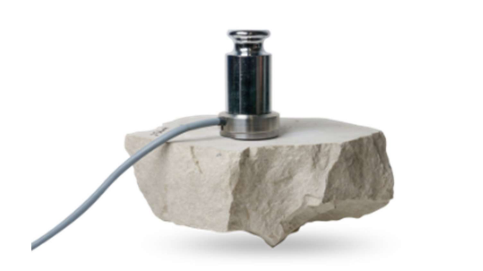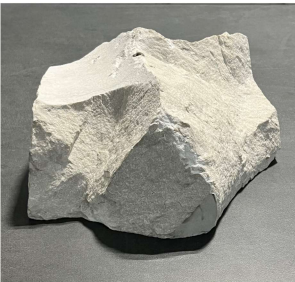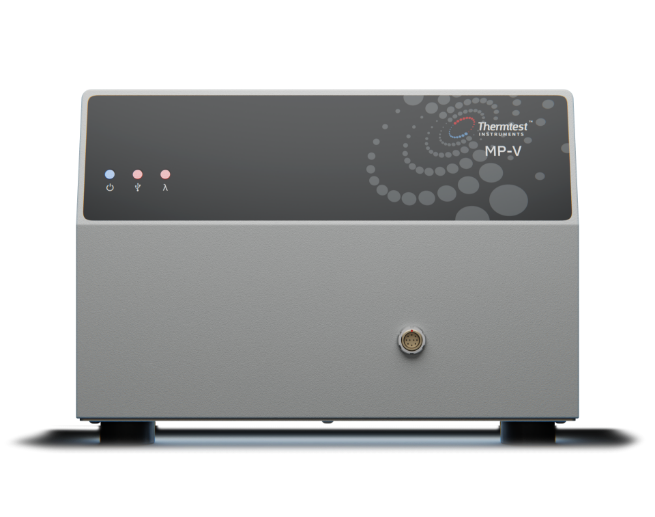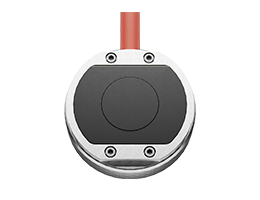Dolomite is a naturally occurring carbonate mineral, making up roughly 2% of the earth’s crust. It can be mined across the globe and can mainly be found in shallow marine environments. The stone may be colourless, white, pink, or bluish, commonly interbedded with limestone. Dolomite has applications across various industries, including construction, agriculture, glass, and even steel.
Knowing the thermal conductivity of a material is of particular importance in the design and fabrication of construction and building materials. Thermal conductivity data is needed when choosing what minerals function best as thermal conductors or insulators. Also, minerals with higher thermal conductivities typically have greater weathering resistance than lower conductivity minerals.
So how do you test the thermal properties of a large mineral? In this application, we will be testing the thermal conductivity (W/m·K), thermal diffusivity (mm²/s), and volumetric specific heat (MJ/m³K) of a large sample of dolomite using the Modified Transient Plane Source (MTPS) sensor in the alternate configuration.

Figure 1. Alternate configuration of MTPS sensor.
A large sample of dolomite was measured for thermal conductivity (W/m·K), thermal diffusivity (mm²/s), and volumetric specific heat (MJ/m³K) using the Measurement Platform Versatile (MP-V) with Modified Transient Plane Source (MTPS) sensor. The MP-V measures the thermal conductivity and thermal diffusivity of isotropic, anisotropic, and slab materials.
Dolomite is a form of carbonate mineral. Naturally abundant, making up 2% of the Earth’s crust, this mineral is found mainly in lakes or beneath the shallow seafloor. It forms as white, tan, pink or bluish crystals. Dolomite has a Mohs hardness of 3.5 to 4 and is known to be fairly brittle. While the mineral has limited uses, the rock form of dolomite, also known as dolostone, has enormous uses due to its size and availability.
Glass, ceramic and steel production use dolomite. Dolomite is an excellent source of magnesia, making it useful as a mineral supplement, soil fertilizer, and animal feed. You can use it as a decorative stone or crush it for a road base, railroad bed, and aggregate in concrete. To ensure the best material is chosen for the objective, it is crucial to know the thermal properties of dolomite.

Figure 2. Dolomite sample.
The MP-V tests the absolute thermal conductivity, thermal diffusivity, specific heat, and thermal effusivity of solids, liquids, pastes, and powders. The MP-V features a powerful combination of the transient plane source (TPS, ISO 22007-2) and transient hot-wire (THW, ASTM D7896-19) methods with a variety of compatible sensors.
Transient methods share similar theories with differences specific to their primary design. The power supply and sensing circuit electrically connect to the sensors. A current passes through the sensors and increases temperature, which is recorded over time. The heat generated is then diffused into the sample at a rate dependent on the thermal transport characteristics of the material.
The MP-V features the proprietary intelligent Transient Plane Source (iTransient) function designed for testing and analysis automation. iTransient requires only the sample name as user input, and each sample’s appropriate sensor and test parameters are determined.

Figure 3. Measurement Platform Versatile (MP-V).
The Modified Transient Plane Source Sensor (MTPS) comprises of a TPS sensor configured with known backing insulation, permanently housed in a rugged single-sided configuration. This unique design combines the intelligent design of the sensor and measurement capabilities to generate bulk and directional properties for all materials.
This sensor can test isotropic, anisotropic, slab and one-dimensional samples in either a standard configuration with the sample placed on top of the sensor or, for larger sample sizes, an alternate configuration with the sensor placed on top of the sample.

Figure 4. Modified Transient Plane Source (MTPS) Sensor.
A single piece of dolomite was measured in the alternate configuration using our absolute MTPS sensor. Optimal measurement parameters of 5s and 300mW were determined with the help of the proprietary iTransient Plane Source (iTransient) application. The extended sensor correction automatically measured and removed the contact resistance between the sensor and sample, guaranteeing the calculation uses the best analysis possible.
Table 1. Thermal properties of dolomite measured with MP-V at 23°C.
| Temperature (°C) | Thermal Conductivity (W/m·K) | Thermal Diffusivity (mm²/s) | Volumetric Specific Heat (MJ/m³K) |
| 21.3 | 5.258 | 2.602 | 2.029 |
| 5.309 | 2.679 | 1.982 | |
| 5.286 | 2.616 | 2.021 | |
| 5.277 | 2.646 | 1.994 | |
| 5.300 | 2.602 | 2.037 | |
| Mean | 5.290 | 2.629 | 2.013 |
| Standard Deviation | 0.013 | 0.033 | 0.024 |
| % RSD | 0.3 | 1.3 | 1.2 |
Dolomite, 5 sec., 0.3W, 21.3 °C, n=5
In this application, we investigated the thermal properties of dolomite using the Measurement Platform Versatile (MP-V). Measured with accuracy and repeatability with the MTPS sensor in the alternate configuration due to the large sample size. The thermal conductivity of dolomite was found to be 5.290 W/m·K, which is in good accordance with the literature value of 5.1 W/m·K.
Alper, A. M., Doman, R. C., & McNally, R. N. (1981). Mineral properties. Encyclopedia of Earth Science, 276 – 280. https://doi.org/10.1007/0-387-30720-6_82
King, H. M. (n.d.). Dolomite. Geology. https://geology.com/minerals/dolomite.shtml
Thomas, J., Frost, R. R., & Harvey, R. D. (1973). Thermal conductivity of carbonate rocks. Engineering Geology, 7(1), 3–12. https://doi.org/10.1016/0013-7952(73)90003-3
Warren, J. (2000). Dolomite: Occurrence, evolution, and economically important associations. Earth-Science Reviews, 52(1–3), 1–81. https://doi.org/10.1016/s0012-8252(00)00022-2